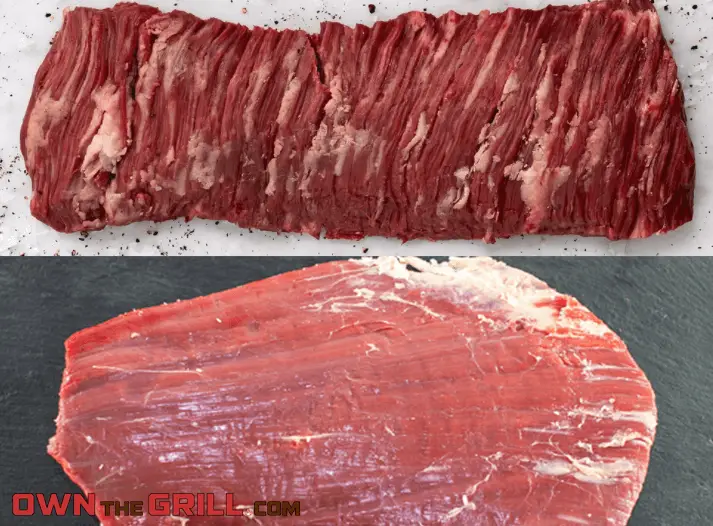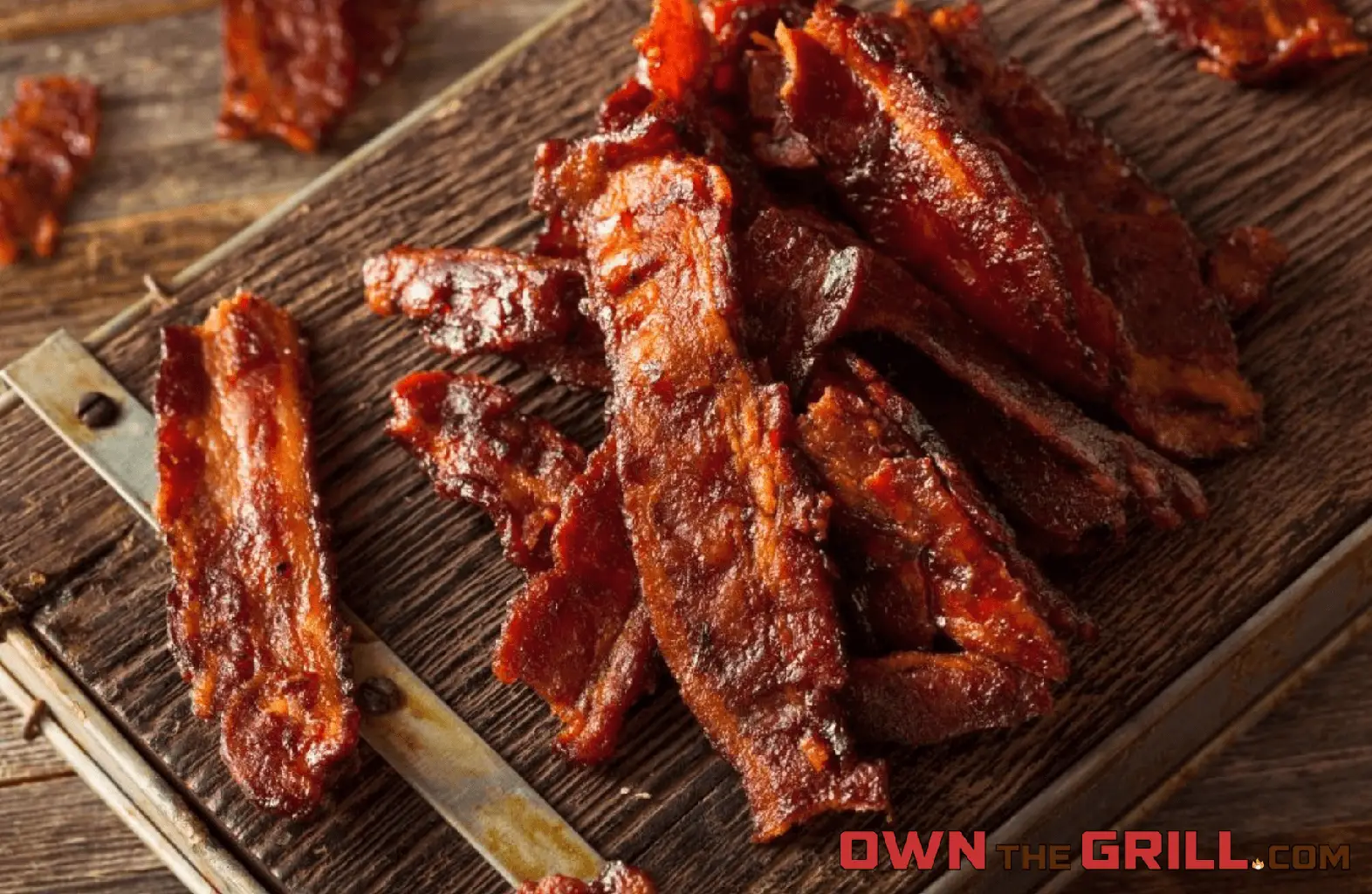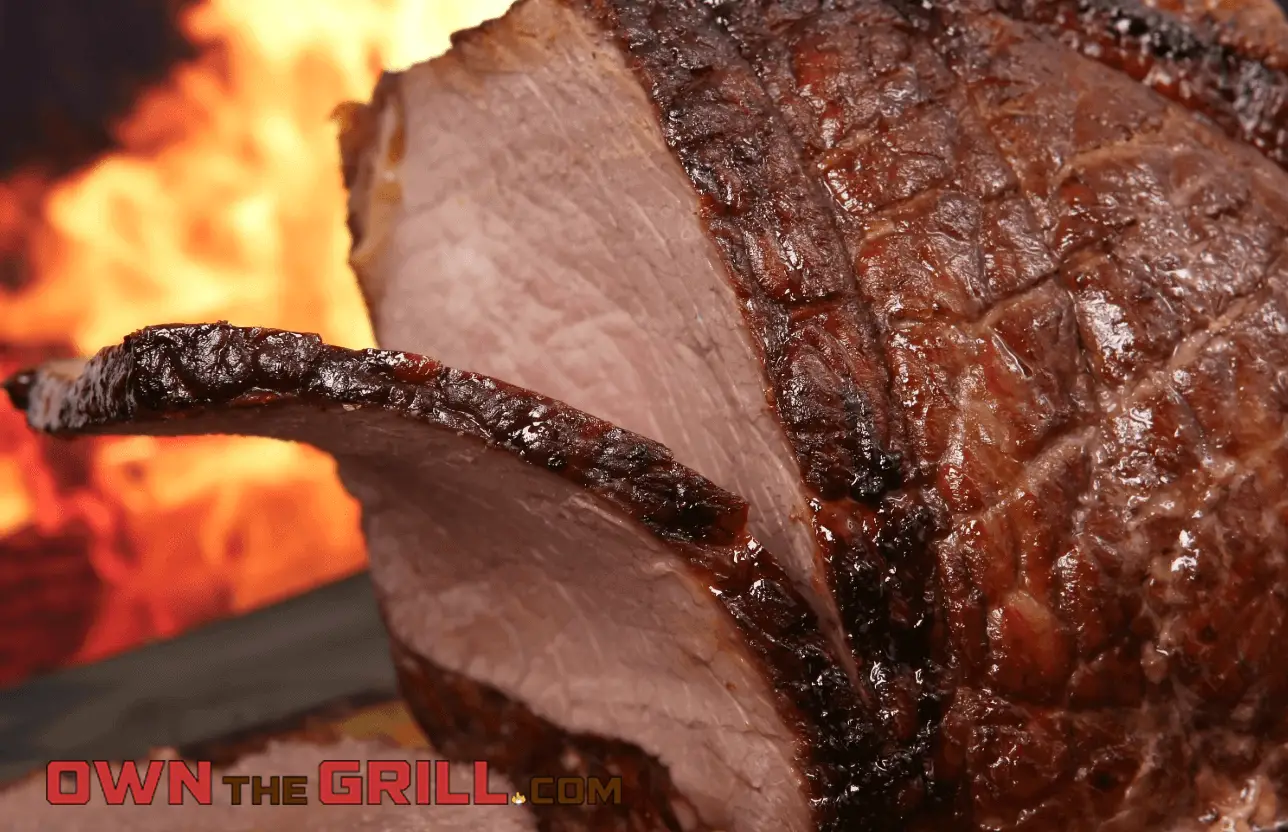The key to smoking meat is a low temperature, ample time, and plenty of smoke to surround your meat.
In this article, we will explore some important information about smoking meat, including what temperature meat stops taking smoke when using any of the smoker grills on the market.
So, let’s begin.
What Temp Does Meat Stop Taking Smoke?
When it comes to smoking a joint of meat, there isn’t a temperature that the meat stops taking smoke. Meat will take smoke the whole time it is subjected to it during the smoking process. There is no time limit on smoke absorption. You want a good, thick stream of smoke around the meat at all times to give the meat the kind of exposure needed to enhance the flavor.
However, the smoke ring stops growing after the meat reaches a certain temperature, which is where the confusion comes from. It is important to note that the smoke flavor and the smoke ring are completely different, despite being the subject of much confusion among BBQ beginners.
The smoke ring stops growing when the meat hits about 170°F and myoglobin loses its oxygen retaining ability. Although this is where the confusion arises, the smoke ring appearance and smoke flavor are entirely different and do not correlate.
It is also worth mentioning that if you tend to use the color of meat to check whether it’s done or not, the smoke ring can be a little misleading. This can be especially off-putting when you’re cooking poultry, as the smoke ring has a pink tinge that can be alarming.
However, this doesn’t always mean it’s undercooked! If you’re not sure whether you’re seeing a smoke ring or underdone meat, make sure that you use a meat thermometer to check the internal temperature at the thickest part of the meat.
How hot your meat should be will depend on the joint of meat you opted for. The internal temperature of roasts and chops should be 145 °F (63 °C). Any pork and all ground meats should be 160 °F (71 °C). Lastly, poultry should be served the hottest at 167 °F (75°C). If your meat is the right temperature, then it’s good to go!
A Guide on How to Get a Smoke Ring
When you smoke a joint of meat, the smoke ring is caused by an interaction between a pink protein in meat named myoglobin with the gases nitric oxide (NO) and carbon monoxide (CO). Nitric oxide and carbon monoxide are made by the combination of carbon and nitrogen with oxygen during the combustion of wood or charcoal.
So, how do you get a smoke ring in your meat? Below are some tips that will help you to encourage the growth of a smoke ring in your meat.
Keep the Meat Moist
When smoking your joint of meat, you should keep the surface wet by basting or spritzing it. For instance, if you’re using pork or beef, you can try basting it with a thin water based BBQ mop. A BBQ mop is a thin, watery solution that you can drip over the meat in order to keep it moist.
It is also worth mentioning that many people spritz with apple juice, which also has fructose which can help with browning the meat.
However, what you use to keep your meat moist will ideally need to compliment the recipe and the type of meat that you are using. As a result, you should keep this in mind and make sure that the flavors compliment the meat well.
By keeping the surface damp, you are allowing sodium nitrite in the smoke to melt on the surface and combine with the myoglobin in the meat to create the smoke ring.
You can also utilize aluminum foil or butcher smoking paper to help lock that moisture in.
- Large roll with easy tear box dispenser
- Refill rolls widely available
Keep the Temperature Low and Cook the Meat Slow
To achieve a smoke ring, you need to be patient. Keep the temperature low and cook the meat slowly! When cooked slowly, the muscle proteins finish breaking down before the naturally pink myoglobin denatures and so the meat remains pink.
Remove the Fat from the Meat
You can also try achieving a smoke ring by removing the fat from the meat. While nitric oxide and carbon monoxide can penetrate through fat, if the underlying meat changes color before they get to it, a smoke ring won’t be visible.
How Long Should You Smoke Your Meat For?
There’s no exact answer to this question, as there are a lot of variables to take into consideration. That being said, how long you should smoke your meat entirely depends on the temperature of your smoker, the size of your joint of meat, and the type of meat.
However, for the majority of the time, you will need to allow for at least 6-8 hours of cooking time – and sometimes much longer. As a result, you should always make sure that you check your recipe to determine how long your meat will need to smoke. The key is to have patience!
As a general rule of thumb, you should check your meat about 4 hours into the smoking process to see if it’s done. If the meat still feels firm, then you will need to cook it for longer.
A large cut of beef brisket, for example, can take as long as 18 to 20 hours to smoke, so it entirely depends on the meat that you are using.
In Summary
When it comes to smoking meat, there isn’t a temperature that the meat stops taking smoke.
However, the trick when it comes to smoking is to always have patience. Cooking your meat on a low temperature and slowly is going to guarantee that deliciously smoky flavor.
Experiment with different types of meat and flavor combinations, and you’ll be a meat smoking pro in no time at all!
Discover more from Own The Grill
Subscribe to get the latest posts sent to your email.





